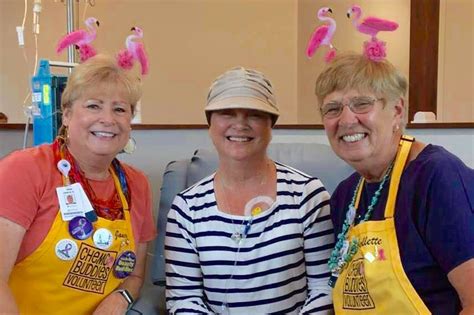
After three months of anticipation, a rescue dog named Goose finally experienced the joy of having his own backyard, marking the end of his prolonged wait for a forever home with dedicated owners.
Goose, a mixed-breed dog, captured the hearts of many at the Wisconsin Humane Society (WHS) with his gentle demeanor and playful spirit. He was brought to the shelter through a rescue mission from an overcrowded shelter in southern states. Goose waited patiently as numerous potential adopters visited the WHS, each hoping to find a canine companion. Despite his endearing qualities, Goose remained at the shelter longer than many other dogs, making his eventual adoption particularly heartwarming.
“Goose came to WHS as part of a transfer from an overcrowded shelter in the south,” said Angela Speed, Vice President of Communications for the Wisconsin Humane Society. “He was a sweet dog who quickly became a staff and volunteer favorite.”
The WHS team worked tirelessly to ensure Goose received the best possible care, providing him with enrichment activities, socialization opportunities, and plenty of affection. However, the shelter environment can be stressful for dogs, and the staff longed for Goose to find a permanent home where he could truly thrive.
Finally, after three long months, Goose’s luck changed. A family from Milwaukee, the Johnsons, visited the WHS, hoping to find a dog who would fit into their active lifestyle. They were immediately drawn to Goose’s calm and friendly nature. After spending time getting to know him, they knew he was the perfect addition to their family.
“We had been looking for a dog for a while, and we wanted to make sure we found the right fit,” said Mrs. Johnson. “When we met Goose, we knew he was special. He was so gentle and loving, and we could tell he would be a great companion for our family.”
The adoption process was completed swiftly, and soon Goose was on his way to his new home. The Johnsons had prepared everything for his arrival, including a cozy bed, plenty of toys, and, most importantly, a spacious backyard where he could run and play.
The moment Goose stepped into his new backyard, his tail began to wag furiously. He bounded across the grass, exploring every corner with boundless energy. It was clear that he was overjoyed to finally have a place to call his own.
“It was so heartwarming to see Goose finally enjoying his backyard,” said Mr. Johnson. “He deserves all the happiness in the world, and we’re so grateful to have him in our family.”
The story of Goose’s journey from an overcrowded shelter to a loving home has resonated with animal lovers around the world. It serves as a reminder of the importance of pet adoption and the life-changing impact it can have on both animals and humans.
“Goose’s story is a testament to the resilience of rescue animals and the kindness of adopters,” said Angela Speed. “We are so happy that he has found his forever home, and we know he will bring his new family years of joy.”
Goose’s story also highlights the ongoing challenges faced by animal shelters across the country. Overcrowding, lack of resources, and limited adoption rates can make it difficult for shelters to provide adequate care for all the animals in their charge. However, the dedication of shelter staff, volunteers, and adopters like the Johnsons provides hope for a brighter future for rescue animals.
The Wisconsin Humane Society encourages anyone considering adding a pet to their family to consider adoption. There are countless animals waiting for their forever homes, and adoption not only saves a life but also enriches the lives of the adopters.
“When you adopt, you’re not just giving an animal a home; you’re also gaining a loyal companion and a member of your family,” said Angela Speed. “Adoption is a win-win for everyone involved.”
The Johnsons are thrilled to have Goose as part of their family and are committed to providing him with a loving and supportive environment. They have already taken him on walks in the park, introduced him to their friends and family, and enrolled him in obedience classes.
“Goose has already brought so much joy into our lives,” said Mrs. Johnson. “He’s a wonderful dog, and we’re so lucky to have him.”
Goose’s story is a reminder that every animal deserves a second chance. With patience, compassion, and a loving home, rescue animals can overcome their past hardships and thrive. The Wisconsin Humane Society and the Johnsons have shown the world the transformative power of adoption, one happy tail wag at a time.
In-Depth Analysis and Background Information
Goose’s journey from an overcrowded shelter in the south to his forever home in Milwaukee encapsulates the broader issues within animal welfare in the United States. The problem of overcrowded shelters, particularly in southern states, is a recurring challenge driven by factors such as higher rates of unspayed and unneutered animals, warmer climates allowing for longer breeding seasons, and regional differences in attitudes towards pet ownership and animal care.
The practice of transferring animals from overcrowded shelters to those with more capacity, like the Wisconsin Humane Society, is a crucial strategy in mitigating euthanasia rates and providing animals with a better chance of finding a home. These transfer programs require significant coordination, resources, and collaboration between shelters, often involving long-distance transportation and meticulous health screenings.
The Wisconsin Humane Society’s role in this process is commendable. As one of the largest animal shelters in Wisconsin, WHS operates with a commitment to providing comprehensive care to animals in need. This includes medical treatment, behavioral rehabilitation, socialization, and adoption services. Their adoption program focuses on matching animals with the right families, ensuring a successful and lasting bond.
The three-month wait Goose experienced highlights the complexities of the adoption process. While some animals are adopted quickly, others may linger in shelters for various reasons, including age, breed, medical conditions, or simply the luck of the draw. Shelters work diligently to promote their animals, using online platforms, adoption events, and partnerships with local media to increase visibility. However, finding the perfect match can take time and requires patience from both the shelter and potential adopters.
The Johnsons’ story exemplifies the ideal adopter profile: individuals or families who are committed to providing a loving, stable, and enriching environment for their new pet. Their willingness to wait for the right dog and their thoughtful preparation for Goose’s arrival underscore the importance of responsible pet ownership.
Expanded Context
The benefits of pet adoption extend far beyond simply providing a home for an animal in need. Studies have shown that pet ownership can have numerous positive effects on human health and well-being, including reducing stress, lowering blood pressure, increasing physical activity, and combating loneliness. Pets provide companionship, unconditional love, and a sense of purpose, enriching the lives of their owners in countless ways.
Moreover, adopting from a shelter or rescue organization helps to combat the problem of pet overpopulation. By adopting, individuals are not supporting puppy mills or irresponsible breeders who prioritize profit over animal welfare. Adoption also frees up space and resources in shelters, allowing them to care for more animals in need.
Goose’s story also touches on the broader issue of breed discrimination. While Goose is a mixed-breed dog, certain breeds are often unfairly stigmatized, making them less likely to be adopted. This can be due to misconceptions about their temperament, size, or perceived dangerousness. Shelters and rescue organizations work to educate the public about breed-specific biases and to promote the adoption of all dogs, regardless of their breed or appearance.
The importance of socialization and training in ensuring a successful adoption cannot be overstated. Proper socialization helps dogs to develop into well-adjusted and confident companions, while training provides them with the skills and knowledge they need to thrive in a human environment. The Johnsons’ decision to enroll Goose in obedience classes demonstrates their commitment to providing him with the best possible start in his new life.
Furthermore, the story highlights the vital role of volunteers in animal welfare. Volunteers assist with a wide range of tasks, from walking dogs and cleaning kennels to providing enrichment activities and assisting with adoption events. Their dedication and compassion are essential to the smooth operation of shelters and rescue organizations.
The Wisconsin Humane Society’s commitment to animal welfare extends beyond adoption services. They also offer a variety of community programs, including humane education, spay/neuter assistance, and pet food banks. These programs are designed to address the root causes of animal suffering and to promote responsible pet ownership throughout the community.
Goose’s story is a microcosm of the larger narrative of animal rescue and adoption. It underscores the challenges, the triumphs, and the unwavering dedication of those who work to improve the lives of animals in need. It serves as a reminder that every animal deserves a loving home and that adoption is a powerful way to make a difference in the world.
The story of Goose also emphasizes the critical need for increased awareness and support for animal shelters and rescue organizations. These organizations rely on donations, grants, and volunteer support to continue their life-saving work. By supporting these organizations, individuals can help to ensure that more animals like Goose have the opportunity to find their forever homes.
The narrative around Goose’s adoption showcases the transformative power of providing a second chance. It highlights the journey many rescue animals undergo, from situations of potential neglect or abandonment to finding solace, care, and ultimately, love in a new environment. The commitment of the Johnsons mirrors the sentiments of countless adopters who open their homes and hearts to animals in need, often remarking on the unexpected joy and fulfillment these animals bring into their lives.
The broader implications of stories like Goose’s touch upon societal attitudes toward animal welfare and the ethical considerations surrounding pet ownership. It provokes reflection on the responsibilities of humans to care for animals and to ensure their well-being. The act of adoption itself becomes a statement, a conscious choice to support ethical practices and to reject the commercial breeding of animals, which can often prioritize profit over the health and welfare of the animals involved.
Moreover, Goose’s story indirectly addresses the issue of responsible pet ownership. Factors such as providing adequate veterinary care, ensuring proper nutrition, offering behavioral training, and creating a safe and stimulating environment are all crucial for the well-being of a pet. The Johnsons’ proactive approach to Goose’s integration into their family, including enrolling him in obedience classes, exemplifies these principles and serves as a model for prospective pet owners.
The Wisconsin Humane Society’s proactive role in facilitating animal transfers and providing comprehensive care also reflects the importance of community involvement and collaborative efforts in addressing animal welfare challenges. By working with other shelters and organizations, WHS is able to extend its reach and provide assistance to animals in need beyond its immediate geographic area.
Finally, the story of Goose reminds us that every animal has a unique personality and deserves to be treated with compassion and respect. Regardless of their breed, age, or background, all animals have the capacity to form deep bonds with humans and to enrich our lives in profound ways. By sharing stories like Goose’s, we can help to raise awareness about the importance of animal welfare and to inspire others to take action to support animals in need.
Goose’s adoption into the Johnson family is not merely a heartwarming tale, but a powerful example of how individual actions, combined with the dedication of organizations like the Wisconsin Humane Society, can create positive change in the lives of animals. It underscores the importance of responsible pet ownership, the benefits of adoption, and the unwavering commitment of those who work to ensure the well-being of animals in our communities.
The ripple effect of Goose’s adoption extends into various aspects of community and individual well-being. By choosing to adopt, the Johnsons have not only given Goose a loving home but have also supported a local organization dedicated to animal welfare, contributing to the local economy through pet supplies and veterinary services, and setting an example for others in their community to consider adoption. This action resonates beyond the immediate circle, potentially inspiring others to open their homes and contribute to the collective effort of improving animal welfare.
Further examination reveals the psychological benefits for the Johnsons themselves. The act of caring for Goose can enhance their sense of purpose, reduce feelings of loneliness, and foster a greater sense of connection and empathy. Studies have shown that interacting with pets can lower stress levels, reduce blood pressure, and even improve cardiovascular health. Thus, Goose’s adoption is not just a gift to him but also a boon to the well-being of his new family.
From a broader societal perspective, the success story of Goose reinforces the importance of promoting responsible pet ownership and combating animal abuse and neglect. By highlighting the positive outcomes of adoption, we can help to shift public perceptions and encourage more people to consider adopting rather than purchasing pets from breeders. This, in turn, can reduce the demand for puppy mills and other unethical breeding practices, ultimately contributing to a more humane and compassionate society.
The role of social media in amplifying Goose’s story cannot be ignored. In today’s digital age, stories like Goose’s have the potential to reach a vast audience, spreading awareness and inspiring action on a global scale. The viral nature of such stories can help to raise funds for animal shelters, increase adoption rates, and promote responsible pet ownership practices.
Moreover, the story of Goose highlights the importance of community partnerships in animal welfare. The collaboration between the Wisconsin Humane Society and other shelters in transferring animals from overcrowded areas demonstrates the power of working together to address systemic challenges. Such partnerships can help to share resources, expertise, and best practices, ultimately improving the lives of animals in need.
In conclusion, the story of Goose’s journey to his forever home is a testament to the transformative power of adoption, the importance of responsible pet ownership, and the unwavering dedication of those who work to improve the lives of animals in need. It serves as a reminder that every animal deserves a loving home and that by working together, we can create a more humane and compassionate society for all.
Frequently Asked Questions (FAQ)
1. Why did Goose have to wait three months to be adopted?
Goose waited three months primarily because finding the right match between a dog and a family can take time. While he was a sweet and friendly dog, factors such as individual preferences of potential adopters, the specific needs of families, and the sheer volume of animals in shelters can contribute to longer waiting periods. The Wisconsin Humane Society strives to ensure a good fit for both the animal and the adopters, which sometimes necessitates a more extended search.
2. Where did Goose come from before arriving at the Wisconsin Humane Society?
Goose came to WHS as part of a transfer from an overcrowded shelter in the south. This is a common practice among animal shelters to help alleviate overcrowding and give animals a better chance of finding a home.
3. What made the Johnsons choose Goose as their new family pet?
The Johnsons were drawn to Goose’s calm and friendly nature. They were looking for a dog who would fit into their active lifestyle and who would be a good companion for their family. After spending time with him, they realized that he was the perfect fit for their family and were impressed with his gentle and loving demeanor.
4. What is the Wisconsin Humane Society doing to help other animals like Goose?
The Wisconsin Humane Society (WHS) operates with a commitment to providing comprehensive care to animals in need. This includes medical treatment, behavioral rehabilitation, socialization, and adoption services. They facilitate transfers from overcrowded shelters, offer community programs like humane education and spay/neuter assistance, and work to match animals with the right families to ensure a successful and lasting bond. They also rely on volunteers and donations to support their life-saving work.
5. How can I help animals like Goose find their forever homes?
There are several ways to help animals like Goose. You can consider adopting a pet from a local shelter or rescue organization. If you are not in a position to adopt, you can volunteer your time at a shelter, donate money or supplies, or spread the word about adoptable animals through social media. Supporting organizations like the Wisconsin Humane Society through donations and participation in their programs can also make a significant difference in the lives of animals in need.









